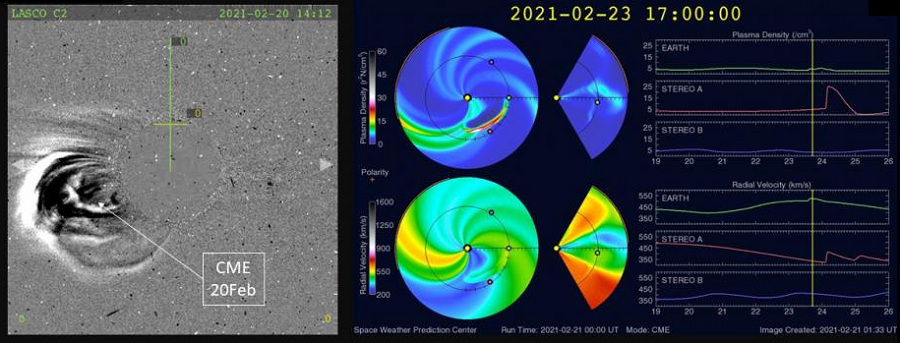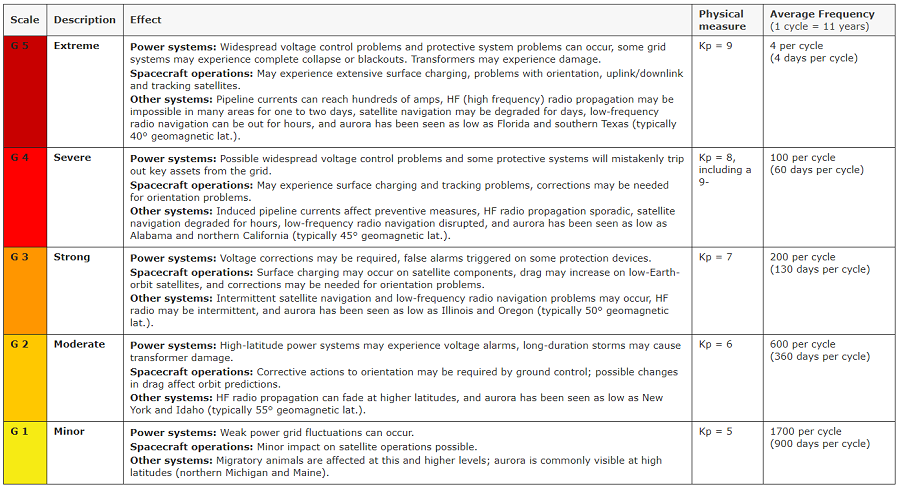
The National Weather Service’s Space Weather Prediction Center (SWPC) continues their G1 Geomagnetic Storm Watch through tomorrow. SPWC analysis suggests a glancing blow from a February 20 coronal mass ejection (CME), with impacts to Earth possible later today into early tomorrow.
“It is likely that the flanking edge of the CME may arrive as a minor glancing blow late on the 23 February UTC-day. Any CME influences would likely continue into early on the 24 February UTC-day,” the SWPC said in a storm watch statement. They add, “Analysis indicated most of the transient will likely pass behind Earth’s orbit, therefore, there are levels of uncertainty with this forecast.”

The G1 Watch in effect now is the lowest of the possible watches on the 5 point scale. Known as a “minor” event, a G1 geomagnetic storm could lead to weak power grid fluctuations, some impacts to satellite operations, and a very visible aurora at high latitudes such as Michigan and Maine. If the SWPC thought impacts could be worse, they would raise the G1 to a G2 or higher watch or convert the watch to a warning to indicate the presence of the impact.
While typically known for their weather forecasts, the National Oceanic and Atmospheric Administration (NOAA) and its National Weather Service (NWS) is also responsible for “space weather.” While there are private companies and other agencies that monitor and forecast space weather, the official source for alerts and warnings of the space environment is the SWPC. The SWPC is located in Boulder, Colorado and is a service center of the NWS, which is part of NOAA. The Space Weather Prediction Center is also one of nine National Centers for Environmental Prediction (NCEP) as they monitor current space weather activity 24/7, 365 days a year.
With this solar wind event, the Northern Lights could be strong at northern latitudes and may appear further south than usual. One of the better ways to track aurora activity is through the free Aurorasaurus app. Aurorasaurus allows users to share aurora sightings and pictures while also alerting others to the presence of aurora.